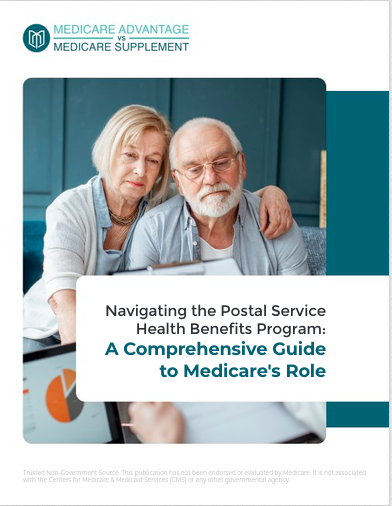Key Takeaways
-
In 2025, Medicare drug plans (Part D) cover a wide range of prescription medications, but not every drug is included, and coverage varies by plan.
-
Understanding what is and isn’t covered can help you avoid unexpected costs, especially with the new $2,000 annual out-of-pocket cap now in place for covered prescription drugs.
What Medicare Part D Covers in 2025
Medicare Part D helps pay for prescription drugs, but it doesn’t cover every medication. In 2025, the standard Part D benefit includes several important changes designed to improve affordability and access. However, knowing what is covered and what is not still matters.
Here’s what you can generally expect Medicare drug plans to cover:
Prescription Drugs on the Plan’s Formulary
Each Medicare Part D plan has a formulary, which is a list of drugs the plan covers. The drugs on this list are organized into tiers, which affect how much you pay:
-
Tier 1: Preferred generics (lowest cost)
-
Tier 2: Non-preferred generics
-
Tier 3: Preferred brand-name drugs
-
Tier 4 and above: Non-preferred brand-name or specialty drugs (higher cost)
Plans are required to include at least two drugs in every therapeutic category, ensuring a minimum level of access. However, not all drugs in a category will be included.
Commonly Covered Drug Types
-
Drugs for chronic conditions such as diabetes, high blood pressure, and high cholesterol
-
Antidepressants and antipsychotics
-
Cancer medications
-
Antibiotics and antifungals
-
HIV/AIDS treatments
-
Immunosuppressants following organ transplants (in certain situations)
These categories generally appear in all Part D formularies, though specific drugs within these groups can differ by plan.
Vaccines and Insulin
As of 2025, Medicare drug plans cover most recommended vaccines at no cost to you, including:
-
Shingles vaccine
-
Tetanus, diphtheria, and pertussis (Tdap)
-
Pneumococcal and hepatitis vaccines
Insulin is also more affordable due to federal changes. Covered insulin products have a $35 monthly cap or lower, depending on the plan’s structure.
What Medicare Part D Does Not Cover in 2025
While coverage has improved, there are still several things that Medicare drug plans do not cover. Knowing these exclusions can help you plan ahead and avoid surprise costs.
Drugs Not on Your Plan’s Formulary
If a medication isn’t listed on your plan’s formulary, it generally won’t be covered. You may:
-
Pay the full retail cost out of pocket
-
Request an exception or prior authorization
-
Switch to a covered alternative, if available
It’s important to review the formulary during the Annual Enrollment Period (October 15 to December 7) or when selecting a plan for the year.
Over-the-Counter (OTC) Medications
Medicare drug plans do not cover:
-
Pain relievers like acetaminophen or ibuprofen
-
Cold and flu remedies
-
Laxatives, allergy medications, or sleep aids
These products must be purchased out of pocket, unless you are enrolled in a plan that offers supplemental benefits outside standard Part D.
Drugs for Weight Loss or Gain
Medications used primarily for weight management, unless medically necessary and specifically approved by the plan, are excluded. These include:
-
Appetite suppressants
-
Weight gain enhancers
-
Anorexiants
Cosmetic or Fertility Medications
Part D does not cover drugs used for:
-
Hair growth (e.g., minoxidil)
-
Skin lightening
-
Cosmetic acne treatments
-
Fertility treatments
If your treatment involves these types of medications, they will not be reimbursed under Part D.
Erectile Dysfunction (ED) Drugs
Medications like sildenafil (when used for ED and not for other medical reasons like pulmonary hypertension) are not covered.
Medications Covered Under Part A or Part B
Certain drugs administered in hospital or clinical settings are covered by Part A or Part B, not Part D. These include:
-
Chemotherapy administered in a clinic
-
IV infusions
-
Certain injectable osteoporosis drugs
Be sure to check which part of Medicare is responsible for your medication to avoid billing confusion.
The Role of Prior Authorization and Step Therapy
Just because a drug is on your plan’s formulary doesn’t mean you can access it without restrictions. Medicare drug plans often require:
Prior Authorization
You or your prescriber must get approval from the plan before it will cover the medication. This is common for expensive drugs or those with safety risks.
Step Therapy
You may need to try a lower-cost drug first before moving on to a more expensive option. If that first drug is ineffective, the plan may then cover the second-line treatment.
Quantity Limits
Plans may limit the amount of medication you can receive within a certain time frame. For example, only a 30-day supply at a time may be allowed.
The 2025 Out-of-Pocket Cap and What It Means
One of the most significant changes in 2025 is the new $2,000 annual out-of-pocket cap on prescription drugs under Part D. This cap simplifies the coverage phases that used to include the coverage gap (donut hole) and catastrophic coverage.
Once your out-of-pocket costs for covered drugs reach $2,000:
-
You will not pay anything more for covered prescriptions for the rest of the year.
-
This cap applies only to drugs covered by your plan.
-
Costs for excluded medications or drugs not on the formulary do not count toward the $2,000 limit.
How to Check What’s Covered
To avoid surprises, always verify coverage details before filling prescriptions. Here are some tips:
-
Review your plan’s formulary annually.
-
Use Medicare’s Plan Finder Tool during enrollment periods to compare plans.
-
Call your plan’s customer service to confirm if a drug is covered and at what tier.
-
Ask your doctor if an alternative, covered medication is available.
Timing Matters: Key Dates for Plan Review
Medicare coverage rules and drug formularies can change every year. You should be especially alert during these key periods:
-
Annual Enrollment Period (October 15 to December 7): Time to switch or update your plan for the upcoming year.
-
Special Enrollment Periods (SEPs): Triggered by life events like moving or losing other coverage.
-
January 1: Start of your new plan year. Be sure your prescriptions are still covered at the same cost.
Why It Matters More Than Ever in 2025
In 2025, the Medicare drug benefit continues evolving, with a focus on reducing out-of-pocket expenses and improving access to life-saving medications. But the system still depends on you making informed choices.
If you don’t check whether your prescriptions are covered and understand how they’re treated under your plan, you could end up paying hundreds or even thousands more than expected.
When in Doubt, Get Help
Making sense of your Medicare drug coverage in 2025 isn’t always easy. A licensed agent can help you understand the nuances, compare your options, and ensure that you’re getting the most from your plan.
Making Smart Choices About Your Drug Coverage
Now more than ever, taking the time to understand what counts as covered under Medicare drug plans can make a major difference in your out-of-pocket costs. From understanding the formulary to knowing which medications are excluded, the details really matter in 2025.
If you’re unsure about your drug coverage or want to review your current plan, reach out to a licensed agent listed on this website for professional guidance.









